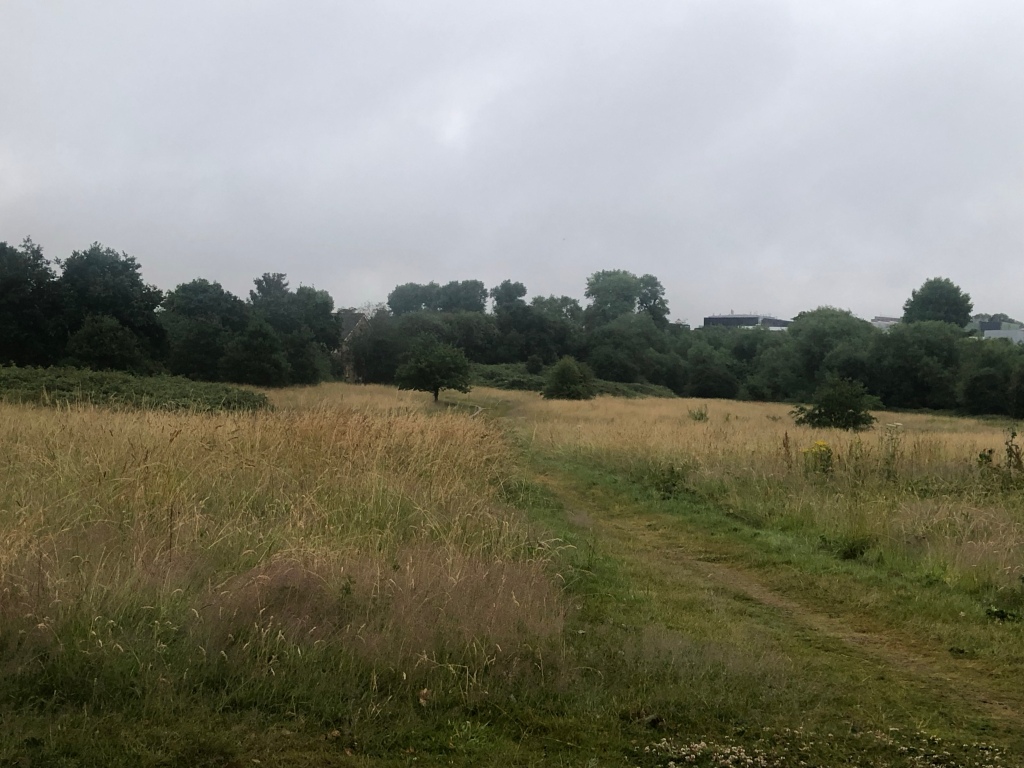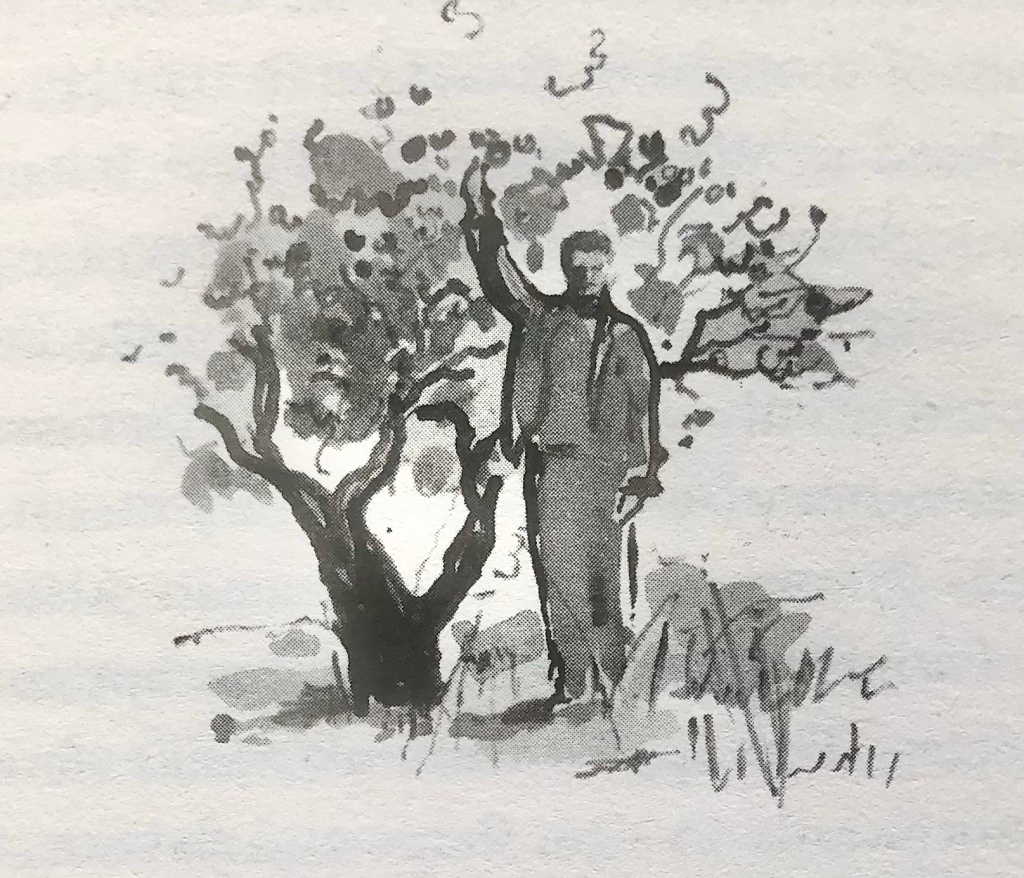There comes a time when light entertainment on an evening’s telly is like a massive trifle: you know that there would be a time when you would enjoy it, but equally you know this is not that time.
That was a few nights ago.
So rather than sit with half an eye on Wimbledon and the rest of my attention on my ‘phone, I went out. Threatening rain, and not many cars on the roads: it was quiet. Some day birds still around – I could see and hear a Wood Pigeon and some Blackbirds, and up in a very tall willow, a Kestrel. And under that I heard a running set of tunes from littler birds.
I was able, by activating my new App, to map what was where. It was damp, getting dark, so I had a couple of Blue Tits, the Kestrel once, Great Tit and as I spotted, the Pigeons and the Blackbird. Low trees and bushes for the small birds, still zipping about, the Blackbird and Thrush in the lower branches of big trees and the Wood Pigeons ungainly in the top branches.

Yesterday morning in the quiet garden the App gave a lot more: Goldcrest, a Robin, Magpies, and this evening a Blackcap. However, it gave me pause for thought, the same disquiet I have had when out with Mat: how much do I sacrifice of an holistic appreciation of place in order to name this plant, that village in the distance, that bird? I recall my comment that my experience of being outdoors “is enriched but also boundaried by names.”
This is where Merlin, the Cornell University App, comes in. As its introductory story suggests
Merlin is designed to be a birding coach for bird watchers at every level. Merlin asks you the same questions that an expert birder would ask to help solve a mystery bird sighting…It takes years of experience in the field to know what species are expected at a given location and date.
https://merlin.allaboutbirds.org/the-story/
Years of indwelling, of spotting quietly and without sensationalism that bird you expected or didn’t expect. The same would be true of the hemlock by the path, the fallow deer by the car park, the otter footprint on the sandy bank. Parsing the landscape (a phrase used of Alan Garner, but this blog post has some interesting thoughts, too) must include the flora and fauna, and we have to then admit something not so much about our vision of the landscape but what we exclude. The dry stone wall or hedge is more than just a division; it is a provider of microclimates and refuges, shade or a safe place to pass unseen.
In the angle a narrow opening runs through between the two banks, whihc do not quite meet: it is so overgrown with bramble and fern, convulvulus and thorn, that unless the bushes were parted to look in no one would suspect the existence of this green tunnel, which on the other side opens on the ash copse, where a shallow furrow (dry) joins it. This tunnel is the favourite way of the rabbits from the copse out into the tempting pasturage of the meadow; through it, too, now and then, a fox creeps quietly…
Richard Jefferies, Wild Life in a Southern Country, Ch 11: The Homefield.
It is an added joy (for some) to know we are spotting Conicum maculatum, or Dama dama, or Lutra lutra, but for most of us, this doesn’t add to the experience of the environment. Just as E B Ford scathingly reports that
There has been a tendency for mathematicians to sit at home and deduce how evolution ought to work rather than base their analyses upon the results of observation in the field.
E. B. Ford (1979) Ecological Genetics
so the naming of the content of a hillside or a dune goes some way but does not – cannot – give a full picture on its own. This is why reducing Richard Jefferies (above) to the list (below) is a reduction almost ad absurdum:
- Bramble: Rubus fruticosus, https://www.woodlandtrust.org.uk/trees-woods-and-wildlife/plants/wild-flowers/bramble/
- Hart’s Tongue Fern, Asplenium scolopendrium, https://ebps.org.uk/ferns/identification/key-to-common-british-native-ferns/common-native-ferns/
- Bindweed/Convulvulus, Convolvulus arvensis, https://www.wildlifetrusts.org/wildlife-explorer/wildflowers/field-bindweed
- Hawthorn, Crataegus monogyna, https://www.woodlandtrust.org.uk/trees-woods-and-wildlife/british-trees/a-z-of-british-trees/hawthorn/
- Ash, Fraxinus excelsior, https://www.woodlandtrust.org.uk/trees-woods-and-wildlife/british-trees/a-z-of-british-trees/ash/
- Rabbit, Oryctolagus cuniculus, https://www.google.co.uk/books/edition/Stories_Rabbits_Tell/ZCS5yfJ7NAEC?hl
- Fox, Vulpes vulpes https://www.woodlandtrust.org.uk/trees-woods-and-wildlife/animals/mammals/fox/
and is why Roger Deakin’s Wildwood is as much a sociology of plants and humans as it is a travelogue* or Jefferies’ writing is an “intuitive ecology” (to borrow Mabey’s phrase from his introduction to the Little Toller edition of Jefferies’ masterpiece), with an “insistence on the connectivity of the natural world.” And it is these connections that help me pose questions: why no wrens in my back garden? What do those song thrushes do when they call out those maddeningly different snatches of tune?
The Merlin App, to give it its due, is not simply an amateur’s way of finding what chirrupped like that, what irascible song bird scribble came from that bush like that, but a massively ambitious attempt to bring together all the naming of parts from around the world – and I love it, and what it teaches me. But the great writers on nature are able to move from observation in the field to exploring the rich and precious connectivity of the landscape, while bringing an understanding of the individual elements: a genuine reading of all the elements that make up a story, a close reading and a parsing, for which my naming this plant or animal is (to continue the metaphor) just me “barking at text.”
_________

*Wildwood continues to be a delightful book: the story of the apple trees and their transit through Europe, for example, remains a beautiful piece of writing as well as an illuminating account of a major, if too little known, story of ethnobotany.